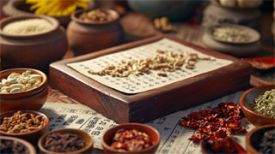Blood vessels are like a large network that spreads throughout the body, delivering blood and oxygen to every part of the body, serving as a bridge for blood circulation. However, if there is too much garbage in the blood vessels, it can easily lead to vascular blockage, resulting in thrombotic plaques and triggering heart and brain infarction.
The winter solstice is approaching, and the temperature is gradually cooling down throughout the country recently. The sun is shining during the day, and the morning and evening are very cool. The temperature difference between day and night is large, and it is also the high incidence period of cardiovascular and cerebrovascular diseases!
Hyperlipidemia is a common cardiovascular disease, and many people are not unfamiliar with statin drugs.
Once diagnosed with hyperlipidemia, long-term use of statins is necessary to lower blood lipids, prevent elevated levels of cholesterol and triglycerides, and effectively stabilize plaques against atherosclerosis.
In addition to taking medication, everyone should also adjust their diet more. In fact, there are many foods in life that can be called "natural statins". If consumed regularly, they can also help lower blood lipids.
Experts from the Chinese Academy of Traditional Chinese Medicine have also mentioned that China's unique ingredient, red yeast rice, contains statin like ingredients and is known as the "natural statin" on the dining table.
Red yeast has a history of over 1000 years in China. The Compendium of Materia Medica records that red yeast has the effects of invigorating the spleen, promoting digestion, promoting blood circulation, and removing blood stasis, and is called a "miraculous medicine".
The auxiliary lipid-lowering effect of red yeast
As early as 1979, Japanese scholar Zhang Endo isolated the lipid-lowering active ingredient Monaeolin K acid lovastatin from red yeast rice produced in Thailand for the first time. The study also found that red yeast contains abundant physiological active substances such as ergosterol, bioflavonoids, saponins, dietary fiber, and amino polysaccharides, which have a wide range of pharmacological effects such as assisting in lipid-lowering, blood pressure lowering, blood sugar lowering, anti fatigue, and enhancing immunity.
Later, red yeast rice became a precursor to statins, and it can even be said to be the "ancestor" of statin drugs.
Soak red yeast in water to drink, promote blood circulation and protect the pulse
For daily consumption of red koji, it can be made into red koji rice or boiled into red koji Congee in the proportion of 100g rice and 3-10g red koji rice.
Secondly, it can also be used to brew water alone or paired with other medicinal herbs to make a health tea drink.
Method: 5 grams of kudzu root, 5 grams of raw earth, 5 grams of white peony, 5 grams of red peony, 5 grams of raw hawthorn, and 2 grams of red yeast can be used for decoction or tea brewing. This is a daily dosage, and water can be added after drinking.
Attention: It is not suitable for people who are obese, have heavy phlegm and dampness, and have yang qi deficiency.
Can red yeast replace lipid-lowering drugs?
No way!
Red yeast can only play an auxiliary role in health and wellness, and cannot be used as a substitute for medication!
Because the fermentation time and temperature of different rice are different, there are also certain differences in the content of lovastatin produced by fermentation. Choosing to take "natural statin" red yeast cannot control the amount well.
To stabilize blood lipids, in addition to red yeast, you can also try the following foods to assist in lowering blood lipids, lowering blood sugar, strengthening the spleen and stomach... There are many benefits!
01 natto
Natto is a type of soy product suitable for all age groups. It contains vitamin K2 protein, which is more conducive to digestion and absorption, and can protect the health of the gastrointestinal tract.
Natto contains nattokinase, which can dissolve blood clots and clear blood vessels. Eating natto regularly can help lower blood lipids.
02 Hawthorn
Hawthorn not only has an appetizing effect, but is also known as a "natural lipid-lowering drug" in medicine. Hawthorn contains citric acid, flavonoids, and vitamin C.
Eating hawthorn regularly can help accelerate blood vessel dilation, blood circulation rate, dilute blood concentration, and improve blood microcirculation. For people with weak spleen and stomach, it is important to strictly control the intake of hawthorn. Excessive intake can lead to excessive gastric acid secretion and damage to the gastric mucosa.
03 Apple
Apples are often overlooked as auxiliary "lipid-lowering fruits", and their auxiliary lipid-lowering effect comes from their rich pectin, a water-soluble dietary fiber that can bind with bile acids, absorb excess cholesterol and triglycerides like a sponge, and help them excrete from the body.
Pectin can also combine with other cholesterol lowering substances, such as vitamin C and fructose, to enhance its lipid-lowering effect. In addition, the acetic acid decomposed by apples is also beneficial for the breakdown metabolism of cholesterol and triglycerides.
04 Onions
Onions are one of the few vegetables that contain prostaglandin A. Prostaglandin A is a strong vasodilator that can soften blood vessels and reduce blood viscosity. Therefore, it can not only regulate blood lipids, but also assist in lowering blood pressure and preventing thrombosis.
What is more valuable is that onion contains an onion essential oil, which can not only help reduce cholesterol, improve atherosclerosis, but also increase the content of "good cholesterol" - high-density lipoprotein.
Two exercise wheels for proper blood lipid reduction
1. Massage Fenglong acupoint: assisting in lowering blood lipids
Q: My father is 72 years old this year and has been suffering from hyperlipidemia for many years. The doctor has also advised him to exercise more, but he doesn't love it. Is there a way to lower blood lipids without putting in effort?
You can try traditional Chinese medicine acupoint therapy - Fenglong acupoint: massage and tap regularly every day, twice a day, for about 5 minutes each time.
2. Skipping rope
People with high blood lipids need to exercise a lot, and they can choose to jump rope as a way to burn fat quickly. Jumping rope is a form of exercise that can enhance cardiovascular function by constantly jumping, and burning fat can have a weight loss and blood lipid lowering effect.
Moreover, skipping rope does not require too much time and space. 15 minutes of skipping rope is equivalent to jogging for half an hour, and the speed of burning fat is very obvious.
Tip: Avoid excessive exercise and exercise according to your own physical condition.
Reminder: Everyone's physical condition is different. The prescription provided in the article should be adjusted according to the situation of the enthusiast. It is recommended to seek guidance from a professional doctor.
Natural statins on the dining table! Take a little every now and then to lower fat, stimulate appetite, reduce the burden on blood vessels, and take a detour for plaques!
Release time:2024-06-01 14:36:12
Reading:179
Word Count:6997
Subscribe to email


